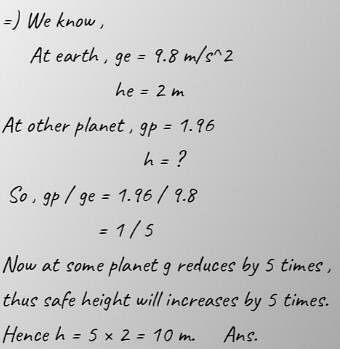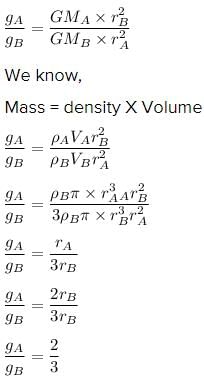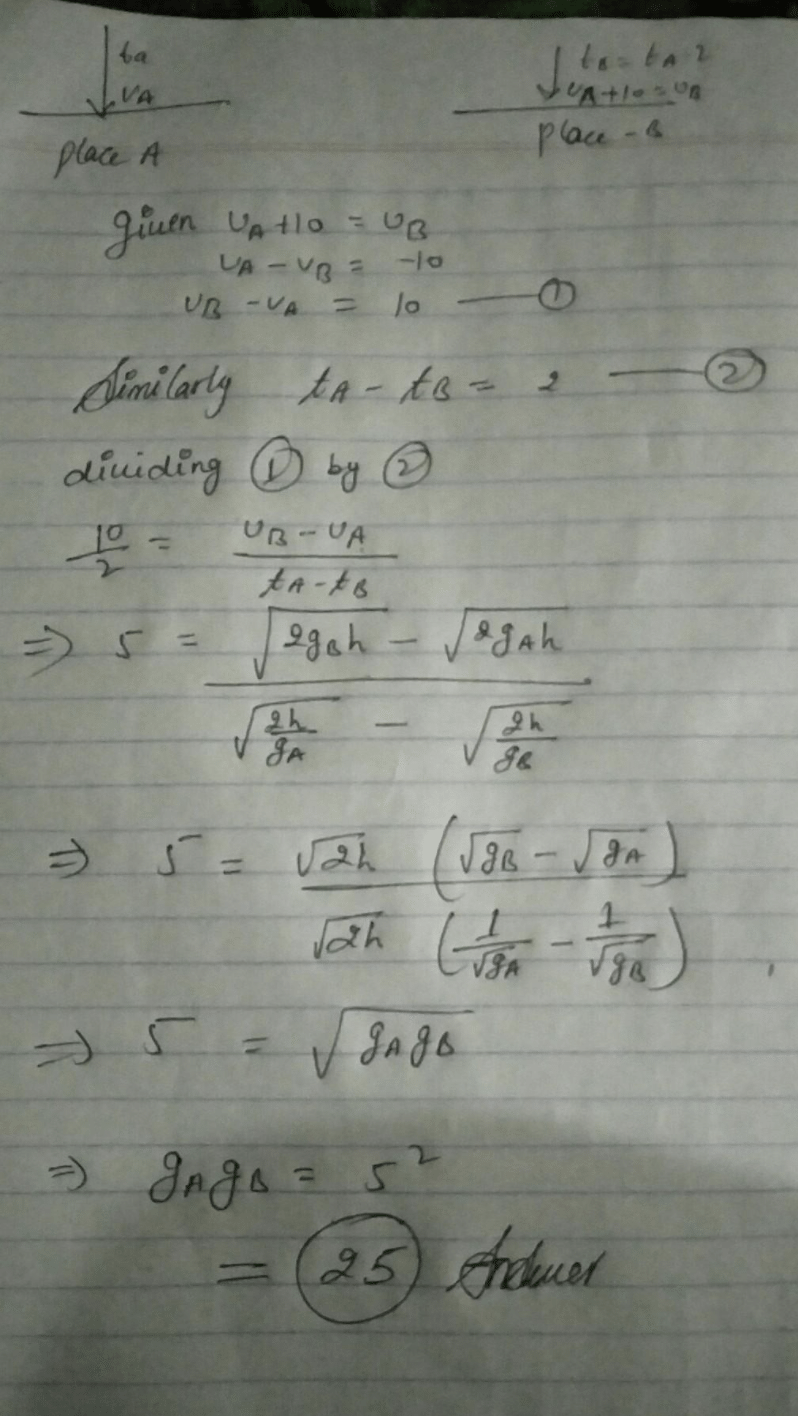Test: Acceleration Due to Gravity - NEET MCQ
10 Questions MCQ Test - Test: Acceleration Due to Gravity
If a person can jump on the earth's surface upto a height of 2m, has jump on a satellite where acceleration due to gravity is 1.96m/s2, will be-
The mass of a planet is 5 times the mass of the earth but its diameter is the same as that of the earth. How much work is done in lifting a stone of mass 3 kg through a distance of 1 m on this planet?
The earth is an approximate sphere. If the interior contained matter which is not of the same density everywhere, then on the surface of the earth, the acceleration due to gravity :
The value of acceleration due to gravity on earth is.
The earth's gravitational force at someplace in space causes an acceleration of 7m/s2 in a 1kg mass.What will be the acceleration of a 5kg mass at the same place?
A ball is thrown vertically upwards. The acceleration due to gravity:
Radius of planet A is twice that of planet B and the dencity of A is one third that of B . The ratio of the acceleration due to gravity at the surface of A to that at the surface of B is.-
The diameters of two planets are in the ratio 4:1 and their mean densities in the ratio 1:2. The acceleration due to gravity on the planets will be in ratio
Two balls are dropped from the same height from places A and B. The body at B takes two seconds less to reach the ground at B strikes the ground with a velocity greater than at A by 10m/s. The product of the acceleration due to gravity at the two places A and B is:


















